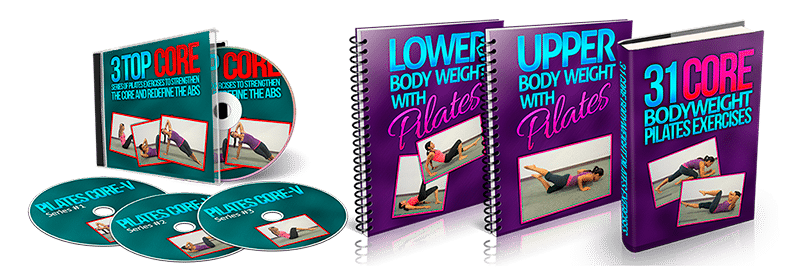by Rick Kaselj on 16-04-2013
Bad posture, low back pain, shoulders rolled forward and a stomach protruding out go hand in hand when suffering from bad posture. Right away a doctor will recommend exercises to strengthen the muscles around the low back and strengthen the core.What get’s missed are the intricate muscles that surround the spine and the forgotten about deep abdominal layer.
Pilates, it’s not just for girls, ballet dancers or gymnasts. I’ve said it time and time again; everyone should incorporate it, whether it’s a top athlete or a novice in the fitness world. To often I see people who want to do Pilates but feel they need to be flexible first before they jump into it. Well that’s not so, doing Pilates actually puts you in the position
It’s the common go to functional training and rehabilitation for injuries.
Pilates is a great workout when your body is fighting against perform day-to-day activity. Just like tying your shoe.
Now, regardless of the type of workout you engage in: Crossfit, HIIT training, Kickboxing, all of these are great and I’ve participated in them. But adding in Pilates will help the body overcome obstacles of bad posture and flexibility restraints.
In the video below I present a posture and flexibility workout that you can start practicing immediately. Please pay careful attention to my points about how to properly hold your position with each exercise.
Here are the key points you should keep in mind when performing the Full Roll Up and modified version – Roll Up with bent knees.
- When going through each move, keep your belly button pulled in towards your spine.
- Do not thrust your ribs forward.
- Your head is in alignment with your spine. Do not let the head lean forward, maintain a long neck.
- As you roll up eyes remain forward, when you are sitting up your eyes are looking down to your knees.
- Control your breath – keep pulling your ribs in towards each other and breathing to the side and back of the body.
- Take a deep breath in, and as you exhale “melt” your ribs down to the floor. Your ribs will seem to have disappeared and melt into your body.
- Arms and hands are extended straight out in line to the shoulders, to help with correct placement hold a broomstick or something light in your hands.
- Inhale lift the torso together as one unit as the arms head neck shoulders move up in a fluid motion.
- Articulate the spine as you roll up, once sitting up slightly tuck the pelvis up and begin to roll back down towards the floor, placing one vertebrae on the floor as your lower your body.
- Begin this move with the knees bent, this will help you to get into the correct position. To assist with the move and help you come up place your feet under the edge of the bed or put on a pair of ankle weights to assist in the move.
- Once you can extend both legs straight out, keep the inner thighs engaged at all times. Toes pointed and sides of the feet together.
- To make the move a bit more intense and challenging, hold a 5-10lbs weighted ball in both hands. If you do this pay close attention you maintain proper position of the spine and head.
The midsection will feel tighter and you will feel as if you are standing taller with your shoulders back. The firm and tight feeling that you will begin to notice is all around the midsection from the front to the back.
Imagine wearing a tight belt or for example a weight lifting belt or a back brace. These Pilates exercises recruit the intricate muscles required to execute a move correctly and with control.
What happens when a back brace or weight lifting belt is strapped on? Immediately the low back seems to feel protected because there is something holding everything in. Perfect, wouldn't you say?
But, it can become uncomfortable to wear this every day all day long. Wouldn't it make a bit more sense to have an already existing tight belt around our midsection? Our bodies are already built for it and factor installed.
The key is to strengthen the core, make it work and perform, as it should.
A stronger core, a flexible body reduces the risk of injuries and helps to speed up recovery when an injury has affected the body. Less time to recover from an injury, just by practicing Pilates on an off day or added into you’re daily workout.
With continued practice your posture will begin to improve as you practice your Pilates moves and are more aware of your positioning and how to engage the muscles in your body so they are firing at all once.
Sylvia Favela, aka “Queen of Pilates”, author of “Body Weight Pilates”.
If you are interested in Sylvia's Body Weight Pilates, you can check it out here:

Source: http://exercisesforinjuries.com/pilates-for-posture/
No comments:
Post a Comment